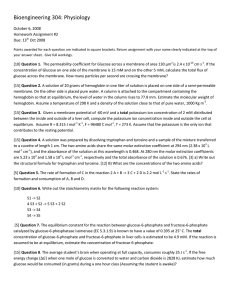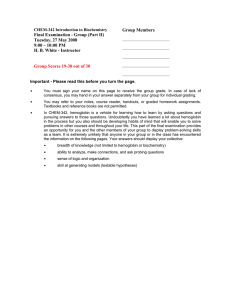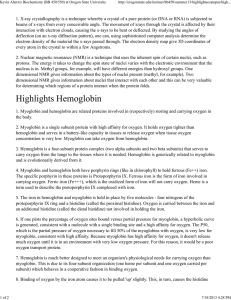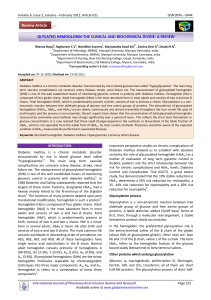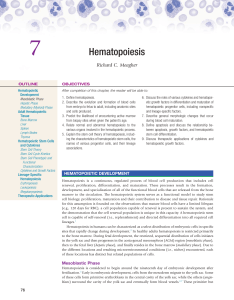Bioengineering 304: Physiology October 15, 2010 Homework Assignment #2 Due: 22
advertisement
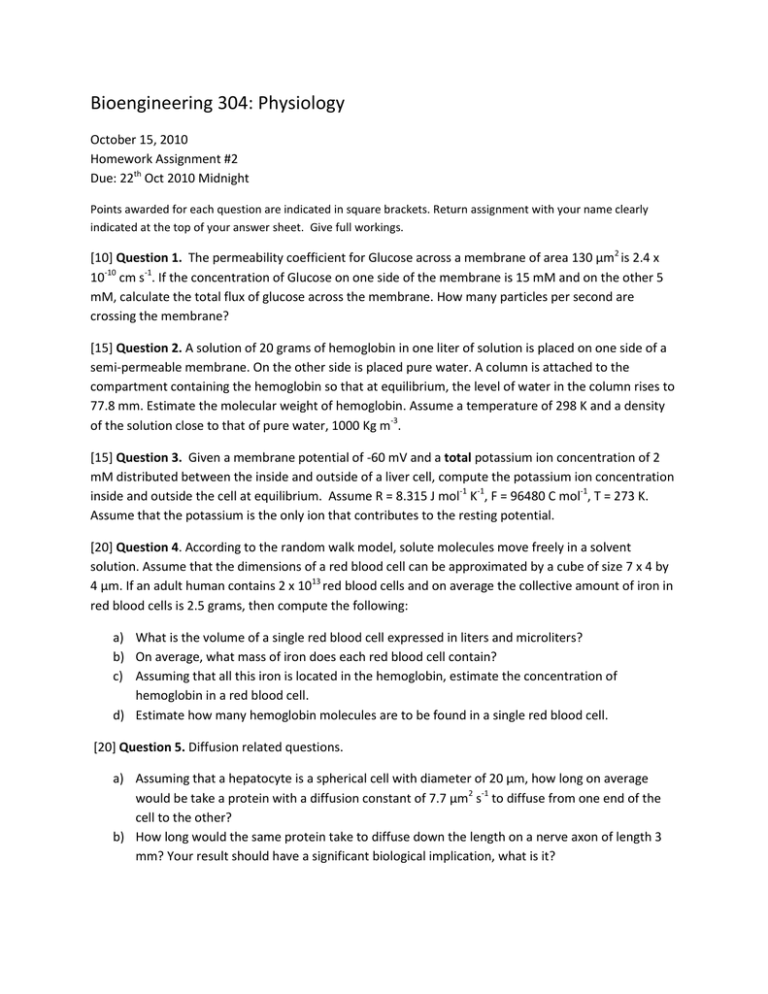
Bioengineering 304: Physiology October 15, 2010 Homework Assignment #2 Due: 22th Oct 2010 Midnight Points awarded for each question are indicated in square brackets. Return assignment with your name clearly indicated at the top of your answer sheet. Give full workings. [10] Question 1. The permeability coefficient for Glucose across a membrane of area 130 µm2 is 2.4 x 10-10 cm s-1. If the concentration of Glucose on one side of the membrane is 15 mM and on the other 5 mM, calculate the total flux of glucose across the membrane. How many particles per second are crossing the membrane? [15] Question 2. A solution of 20 grams of hemoglobin in one liter of solution is placed on one side of a semi-permeable membrane. On the other side is placed pure water. A column is attached to the compartment containing the hemoglobin so that at equilibrium, the level of water in the column rises to 77.8 mm. Estimate the molecular weight of hemoglobin. Assume a temperature of 298 K and a density of the solution close to that of pure water, 1000 Kg m-3. [15] Question 3. Given a membrane potential of -60 mV and a total potassium ion concentration of 2 mM distributed between the inside and outside of a liver cell, compute the potassium ion concentration inside and outside the cell at equilibrium. Assume R = 8.315 J mol-1 K-1, F = 96480 C mol-1, T = 273 K. Assume that the potassium is the only ion that contributes to the resting potential. [20] Question 4. According to the random walk model, solute molecules move freely in a solvent solution. Assume that the dimensions of a red blood cell can be approximated by a cube of size 7 x 4 by 4 µm. If an adult human contains 2 x 1013 red blood cells and on average the collective amount of iron in red blood cells is 2.5 grams, then compute the following: a) What is the volume of a single red blood cell expressed in liters and microliters? b) On average, what mass of iron does each red blood cell contain? c) Assuming that all this iron is located in the hemoglobin, estimate the concentration of hemoglobin in a red blood cell. d) Estimate how many hemoglobin molecules are to be found in a single red blood cell. [20] Question 5. Diffusion related questions. a) Assuming that a hepatocyte is a spherical cell with diameter of 20 µm, how long on average would be take a protein with a diffusion constant of 7.7 µm2 s-1 to diffuse from one end of the cell to the other? b) How long would the same protein take to diffuse down the length on a nerve axon of length 3 mm? Your result should have a significant biological implication, what is it?
